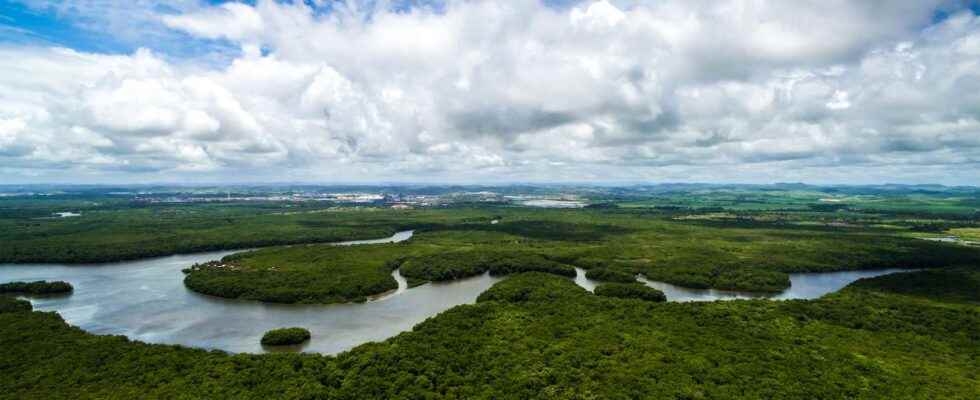New findings upend assumptions about how the landscape of the Amazon Basin was shaped. It could have gone from erosion to construction in just a few tens of thousands of years, which is exceptionally fast for a river of its size.
You will also be interested
[EN VIDÉO] The Amazon rainforest is being consumed at an unprecedented rate Fires in the Brazilian Amazon are up 34% from last year. They are caused by drought and deforestation and have dramatic consequences.
L’Amazon is found in South America. It is the most powerful and largest river in the world. Occupying 40% of the surface of South America, this immense Amazonian basin provides extreme humidity allowing the amazon rainforest to develop there, to prosper and to shelter a particularly important biodiversity. His debit is reinforced by a vast hydrographic network of more than 1,000 rivers which will come to modify the landscape over time. In general, the current of large alluvial rivers transports water and sediments which will either erode or build their channels depending on the quantities of sediments. If a river carries a lot of sediment but little water, the sediment is not carried far by the current and settles to the bottom and then builds its floodplain. Conversely, if a river carries little sediment, the water current digs its bed and deeper valleys, and forms above terraces (old banks).
Erosion and construction, slow processes
The glacial cycles (100,000 years ago) dominated the recent climate of the Earth but scientists don’t yet fully understand if these rivers are sensitive to these rapid cycle changes. Indeed, for many large rivers, erosion or construction canals is a slow process, lasting hundreds of thousands of years. And compared to glacial and interglacial cycles that have periods of 100,000 years, large rivers are expected to react too slowly to be influenced by these rapid changes in climate.
However, the vast young terraces presented by the Amazon River demonstrate rapid geological changes in accordance with the changes in the runoff of the climatic cycles of the Quaternary (last geological era from 2.58 million years ago to the present) suggesting a causal relationship between the two.
In one recent postSamuel L. Goldberg and his colleagues from the Department of Earth Sciences, theatmosphere and planets at Cambridge test this hypothesis and assess the role of climate changefrom the glacial cycles of the Quaternary, on the creation of the high cliffs and deep rivers of the Amazon Basin. To do this, the scientists used a combination of theoretical analysis, empirical measurements and topographical analyzes to estimate how quickly a river profile responds to changes in flow or sediment supply; then they compared these models to the observed fluvial terraces and the burial age of the sediments.
Unexpected results
While scientists thought large rivers like this were resilient to rapid changes in climate, the results upend assumptions about how the landscape of the Amazon was built. To their surprise, the results showed that the Amazon basin could have gone from erosion to construction in just a few tens of thousands of years, a duration significantly shorter than the 100,000 year period of glacial cycles indicating that the construction of the Amazon reflects glacial climatic changes.
This new discovery reminds us that our planet is very sensitive to climate change and tectonics, and that it is largely modified by their influence. The anthropogenic changes that we impose on it will be no exception and will also mark our Earth for thousands of years to come.
Interested in what you just read?
